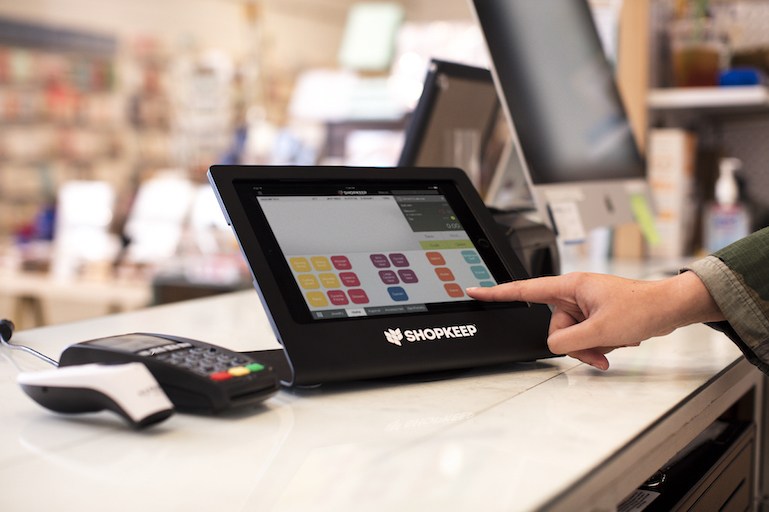
Payment Processing 101: Interchange Plus Rates vs. Flat Rates
Understanding credit card processing fees is one of the more difficult parts of being a small business owner. Understanding the difference between interchange plus rates vs flat rates can be enough to make you pull out your hair.
If that sounds familiar, then you’ll want to keep reading this post. We’re doing to explain the ins and outs of these two pricing models in simple, straightforward terms. Along the way, we’re going to going to help you understand which approach is right for your business.
Credit Card Processing Overview
Before comparing interchange-plus vs. flat rate processing, it’ll be helpful to share a basic overview of how credit card processing works.
There are several parties involved in a typical credit card transaction:
- Issuing Bank – this is the organization that issues a credit card to a customer. Common examples include Chase, Citibank, and Bank of America.
- Credit Card Networks – These entities work with issuing banks to distribute their credit cards. Examples include Visa, Mastercard, and Discover.
- The Acquirer – Colloquially referred to as a “processor” this is the middle man that communicates with the issuing bank to approve or decline a credit card transaction. These are also called merchant service providers (MSPs) or Independent Sales Organizations (ISOs)
Behind every seemingly simple swipe sits a complex chain of communication between these three entities. When a customer swipes or dips their card, the transaction is sent to the issuing bank via the acquiring bank. The issuing bank then approves or declines the transaction and then funds are deposited into the merchant’s bank account. The credit card networks provide the technology and communication infrastructure that facilitates electronic payments.
Basic Overview of Credit Card Fees
This overview of how a credit card transaction actually works is helpful for understanding the fees you’ll need to pay to the processor. These fees inform the pricing model used by the credit card processing companies and as such are a precursor to the processing rate you’ll pay to both interchange-plus and flat rate processors.
Wholesale Rate – This percentage fee (usually a per transaction percentage) is set by both the issuing banks and the credit card companies like Visa and Discover. Because of this, it’s not possible to negotiate this rate. It’s the same for all merchants. However, this rate will differ depending on the type of transaction. For example, a keyed-in transaction will always have a higher fee than a swiped one. Wholesale rates are commonly called interchange rates or an interchange fee.
Processor Markup – This is a per transaction fee that processors will add on top of the interchange rate. Usually, it’s around $0.10 per transaction, but this can vary between processors and transaction types. Because this is set by the processor, there’s some room for negotiation. If you transact at a high volume, you can often negotiate a lower markup.
Miscellaneous Fees – If you work with a good processor, you shouldn’t have to deal with many more fees than the above, but there are a few you could need to pay. For example, credit card terminal rental fees, PCI compliance fees, instant deposit fees, a subscription price that’s a flat fee per month and more. Some of these fees may pay for services you actually want and use, and that’s fine. Just try to minimize unnecessary fees or hidden fees to keep your costs down.
Flat Rate Explained
With this basic overview of fees under your belt, let’s dig into the details of flat rate processing. Flat-rate pricing is exactly what it sounds like. When you use a flat rate processor, all of your transactions fall under one flat rate. This rate includes both the interchange or wholesale rate plus the processor’s markup. Square and PayPal are two of the most popular flat rate processors.
As with anything, there are both pros and cons to using flat rate processing:
Pros of Flat Rate Processing
Easy to Understand – Credit card processing fees and pricing can be pretty complicated. It’s made worse when processors go out of their way to be as nontransparent as possible. With flat rate processing, you pay the same amount for every transaction which can be refreshingly simple.
Predictable – As a small business owner, life likely keeps you guessing, but some meaure of predictability is the key to staying sane. With a single rate it’s easier to predict your processing expenses month to month, which can help you budget effectively.
Cons of Flat Rate Processing
Lack of Transparency – The simplicity and predictability of flat rate pricing comes at a cost. The processor hides both the interchange rate and their markup from you. This makes it impossible to understand why you’re paying what you are. Since you don’t know the details of what you’re paying, it makes it more difficult to shop around to find the best price.
More Expensive – As we touched on earlier, there are many different types of transactions, and each has a different interchange rate. Some are more expensive and some are less. When all transactions cost you the same amount, you lose out on any cost savings you might get based on the transaction type.
Withholding of Funds – Because flat rate processing is so simple to understand, it attracts many new and very small businesses. As a result flat rate processors are extremely conservative with what constitutes fraudulent activity (a common example is if you see a sudden uptick in sales). It’s not uncommon for a merchant to have their funds withheld for extended periods of time due to the appearance of fraud.

Interchange Plus Pricing Explained
The alternative to flat rate processing is interchange-plus processing. Similarly, the name describes this type of pricing as well. You pay the interchange rate plus the processors markup. The biggest difference is that your monthly credit card statement will show you the exact fees that make up each transaction. There are a variety of companies that offer interchange-plus processing. If you’re a ShopKeep customer, or considering the switch, ShopKeep Payments uses interchange-plus pricing and offers the lowest integrated processing rate, guaranteed.
With that explanation in mind, let’s take a look at the pros and cons of interchange-plus:
Pros of Interchange Plus Pricing
Transparency – While it has the potential to make your credit card statement more complex than you might like, with interchange-plus you’ll always see the fees you’re paying for each transaction. Not only does this help you ensure you’re paying a fair price, but it also helps you shop around to find the best price.
More Affordable – Because you pay the true wholesale price for each transaction, you benefit from the transaction types that are more affordable. For example, debit card transactions are typically less expensive than credit. Because of these different rates, your monthly statement could be lower than with a flat rate process. This can help you lower your monthly processing bill versus a flat rate processor because not everything is price the same.
Cons of Interchange Plus Pricing
Complexity – Transparency has its downsides. In this case, it’s increased complexity. Because each transaction has a different price associated with it, and you can’t predict the exact number and type of transactions you’ll get each month, your costs become harder to predict. Most of the time this is more than made up for by the cost savings, but every payment processor is different so it’s something you’ll want to monitor.
SEE ALSO: How to Accept Credit Card Payments — The Ultimate Guide
Which is Right for Your Business?
Choosing between flat rate pricing and interchange plus pricing isn’t always an easy decision. Payment processing is an integral part of most businesses. And as such, you’ll want to take the time to do the appropriate research, model out processing fees, and fully understand the pricing plan for each of the processing companies. It’s a decision you want to do your best to get right the first time.
With the above in mind, we recommend that most companies choose to work with a provider that uses interchange plus pricing. This pricing structure offers the best balance of transparency and cost savings for the widest range of merchants. Knowing your interchange cost on a per transaction basis is the best way to know if your credit card processor is charging you a fair price.
That said, if you crave simplicity over all else, and are willing to pay for it, flat rate pricing could make sense. Just know that your rates and fees will almost certainly be higher than they will with an interchange plus processor.
Lastly, we encourage you to avoid processors that use a tiered pricing model or bundled pricing at all costs. These are hands down the least transparent type of provider and you’ll almost always end up paying more than necessary.
Want to try ShopKeep for yourself?
Just answer a few easy questions.
Need help finding the right point of sale?
Just complete the form. We’ll call you right back to explain how ShopKeep can work for you.
Hit the ground running.Sprinting, in fact!
Read our free, comprehensive guide, Small Business 101, to learn all you need to know about starting a thriving business.

